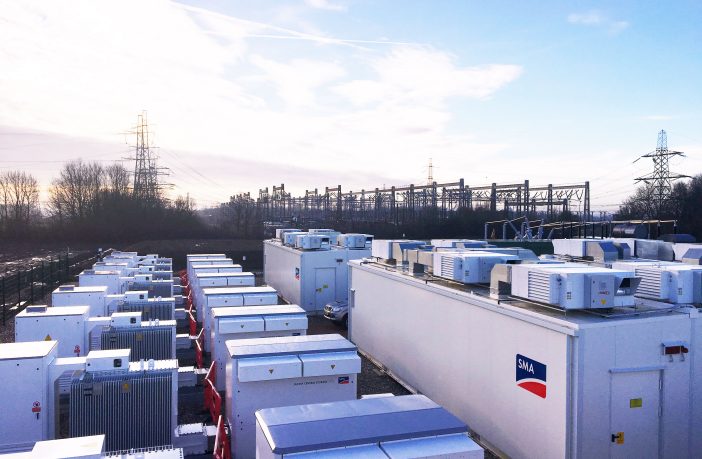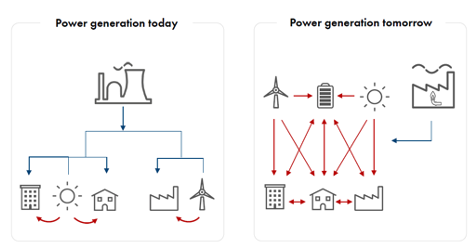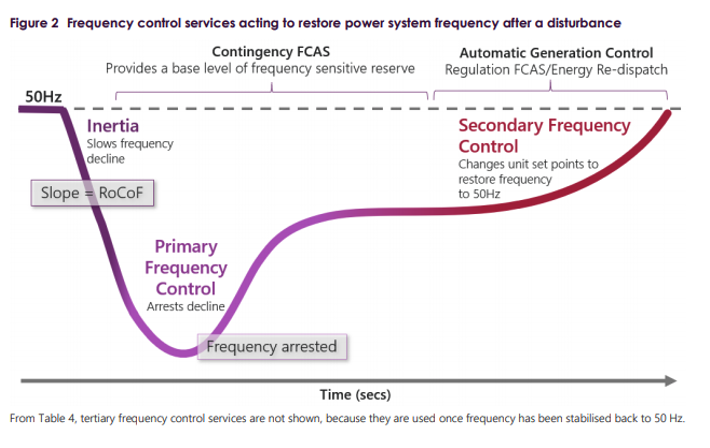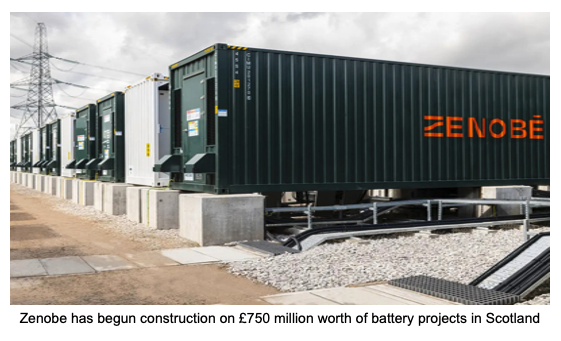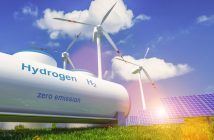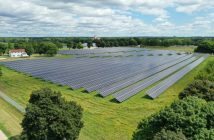Open-Ed
- A stable grid is an essential precondition for successfully transitioning towards a decarbonised future.
- South Africa is currently in the process of decommissioning ageing coal plant infrastructure, and a growing number of distributed renewable energy sources are being added to the grid as the country grapples with frequent loadshedding (blackouts).
Inverter-based resource (IBR) penetration will continue to increase as more renewable generators are added. This will have implications for the stability of the country’s grid, and national planners and private sector participants should keep this in mind going forward. Grid forming (GFM) technology presents an opportunity to not only support the stability of a grid under pressure, but accelerate South Africa towards the grid of the future.
South Africa’s Power Grid Explained
As a brief overview, the grid is a distributed electrical network which powers the country. It has three core components namely generation, transmission, and distribution. Generation entails power plants that generate electricity.
In South Africa, 85% of the country’s power is generated from coal-fired generators, contributing to it being in the top 15 carbon emitters in the world. There has been an ongoing generation shortfall of about 6000 megawatts in the country due to these coal assets ageing and performing poorly. This trend is due to continue, with as much as a 20 GW loss in generation capacity (of a total current capacity of 58GW) going offline by 2035.
To address this, ESKOM has initiated rolling loadshedding in the country, and a growing number of renewable assets are being developed & incorporated into the grid. Reports indicate a current pipeline of 66 GW of wind and solar projects under development in South Africa.
The grid operates at a common synchronised AC frequency of 50Hz in South Africa. In simple terms, this is the ratio of electricity generation to electricity consumption in a power grid. It is imperative this frequency remains consistent as just a 1% deviation from this begins to damage equipment and infrastructure.
Conventional synchronous rotating generators, like the country’s coal plants, are set up to respond automatically to demand requests, correcting frequency deviations in seconds and maintaining frequency through inertia. This will be elaborated upon below.
The shift to IBR’s & Inertia Considerations
Inertia is the tendency of an object in motion to remain in motion and refers to the energy stored in these large rotating generators. By way of reference, it is what keeps a bike in motion and from falling when you stop pedalling. Rotating masses, or the coal-fired generators in South Africa’s case, are spinning objects in the grid which have an inherent inertia that keeps the grid stable when grid disturbance events take place. For example, losing a generating unit in the network, resulting in a mismatch between energy supply and demand.
Most inverter controllers today are grid-following and built on the assumption that system voltage and frequency are regulated by inertial sources. That means they rely on fast synchronisation with the external grid to tightly control their active and reactive current outputs. Such control approaches cannot guarantee system stability in low-inertia settings, and are unlikely to sustain an inverter-dominated infrastructure. There is still much to learn about the operation of hybrid power systems with significant IBRs at the scale of today’s large grid interconnections. As IBR’s are added en masse, frequency fluctuations may result in chain reactions, in the worst case causing the entire grid system to break down.
The Grid of the Future and the Role of Synchronous GFM Inverters
The grid of the future is digitised, smart, and distributed. In the early days of renewables, legacy inverters were simple grid following (‘GFL’) inverters that had the simple task of grid feed-in at unity power factor, with little to no responsibility of grid support. Nowadays, GFL inverters are required to have a modest amount of responsibility for grid support in the power systems. Present-day GFL inverters have the capability to provide both frequency and voltage support when needed within seconds. The increased penetration of IBRs, along with the accelerated decommissioning of aging rotating masses in the grid, will result in a weaker electrical power system with the following challenges:
- Low system inertia
- Low short circuit level
- High sensitivity of IBR terminal voltage to its current injection
In the grid-forming mode, inverters work as traditional synchro-generators, controlling frequency actively, keeping frequency and power output sufficient compared to demand load any time, ensuring stable operation of the electric power system. GFM capable inverters will play a huge role in IBR dominated microgrids and power systems that face the aforementioned challenges.
While the conventional GFL inverters do not have the physical inherent inertial capability of conventional rotating masses, virtual inertia of GFM capable IBRs such as energy storage plants can be utilized to address inertia provision requirements of power plants in order to achieve frequency stability and avoid blackouts. In more technical terms, the inertia is provided by the control loops of the inverter in order to decrease the Rate of Change of Frequency (RoCoF) after a grid disturbance event, so that enough time is provided for primary frequency controls of the system to step-in and arrest the frequency decline and ensure frequency stability.
GFM inverters can also be used to address the challenges faced by weak grids with low short-circuit levels. System strength and short-circuit level are measures of the strength of voltage and the stability to clear system faults. GFM inverters have the ability to increase system strength by increasing the short-circuit ratio (SCR) at point of interconnection. SCR is the synchronous three phase fault level (in MVA) divided by the rated output of an IBR generating system (in MW or MVA) measured at the generating system’s connection point. Higher SCR enables higher levels of renewable generation and ensures reliable transport of energy.
Reference Use Case- Blackhillock, UK
Adding grid-forming capabilities into renewable energy power systems is an easy first step that can make a dramatic difference in building a robust grid for the future. At present, they are mostly present in microgrids, or small electric power systems supplying isolated areas such as islands or small facilities. The next hurdle will be scaling up from small, self-sustained systems, to larger power grids that incorporate a lot of renewable energy.
Several countries have begun this effort, adding GFM capabilities into their systems. The United Kingdom is one of these, having recognised the need to increase grid scale battery storage capacity in its ‘Just Transition Plan’. It is moving swiftly on this, with construction underway of a 300MW, 600MWh GFM battery site in Blackhillock, Scotland. It will be the first to provide the full suite of active and reactive power services in the world, and will be the largest transmission connected battery in Europe when it is commissioned this year. The project was developed by Zenobe, and SMA Solar Technology is providing the GFM solution, battery inverters, and medium voltage power stations.
SMA is a leader in synchronous grid-forming technology, and the inverters are well equipped to cater to this initiative and others like it. Depending on the performance package selected by the client, the technology is able to provide droop control, blackstart capability, inertia control, current boost beyond rated power, as well as meeting grid code compliance as may be required by regulatory authorities.
Other jurisdictions actively implementing similar large-scale grid stability projects include Australia, the US, Germany and France. South Africa has seen gradual adoption of similar large scale GFM projects. This should be addressed to ensure a resilient grid going forward.
As South Africa shifts to an electricity grid which is underpinned by more distributed renewable energy sources, and away from synchronous rotating generators, threats relating to inertia and short-circuit ratio will need to be mitigated. Projects which leverage synchronous grid-forming technology are set to play an important role in this transition.
Authors: Jason Bruce-Bran & Zaid Adwan
Jason Bruce-Brand is Key Account Manager- SMA Project Sales Southern & East Africa. Email: Jason.Bruce-Brand@sma-solar.com. Zaid Adwan is Application Engineer at SMA. Email: Zaid.Adwan@sma-me.com
Download SMA Grid Forming Solutions Brochure HERE
Disclaimer: The articles and videos expressed in this publication are those of the authors. They do not purport to reflect the opinions or views of Green Building Africa, our staff or our advertisers. The designations employed in this publication and the presentation of material therein do not imply the expression of any opinion whatsoever on the part Green Building Africa concerning the legal status of any country, area or territory or of its authorities.








